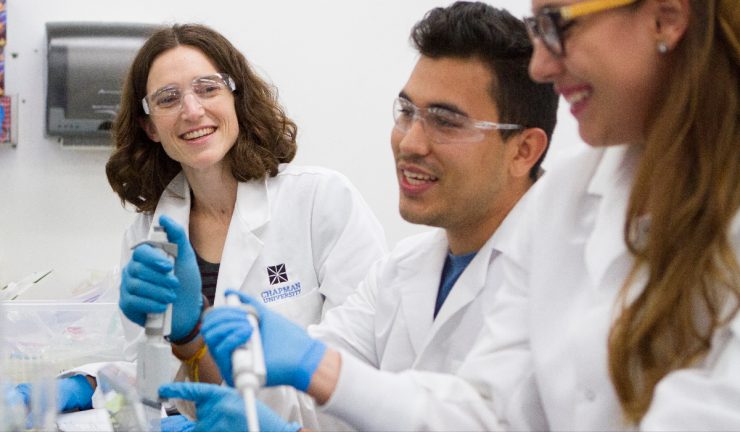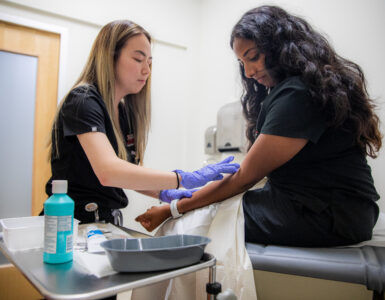A new meta-analysis by The Guardian revealed that seafood fraud is happening on a vast global scale. Examining studies of 9,000 seafood samples from supermarkets, restaurants, markets and fishmongers in more than 30 countries, the analysis found that 36% of the products were mislabeled.
Rosalee Hellberg, Ph.D., associate professor of food science, is available for media interviews about these topics. Dr. Hellberg leads The Food Protection Lab at Chapman University, where her research is dedicated to the development and application of rapid methods to identify food fraud and food contaminants. She’s collaborated with the U.S. Food and Drug Administration (FDA) on several studies focused on the detection of seafood fraud, and is the lead editor of the book, “Food Fraud: A Global Threat With Public Health and Economic Consequences.”
Dr. Hellberg can be reached by contacting Public Relations Coordinator, Bethanie Le, at (714) 497-9683 or bele@chapman.edu.
Q&A with Rosalee Hellberg:
What are your overall thoughts and reactions to The Guardian’s analysis?
Hellberg: The Guardian’s article on seafood fraud provides an excellent overview of this global problem. I like that they conducted a meta-analysis involving seafood products from over 30 countries rather than reporting on a single study. This represents a significant amount of work. It would be great if they could provide more details on their analysis, such as a list of the 44 studies that were examined and their criteria for article selection.
Another thing that I appreciate is that they also published two related articles on seafood fraud around the same time. One gives consumers tips about how to spot seafood fraud. This is a really important thing to discuss. A lot of times when people hear about seafood fraud, they start to shy away from seafood. Seafood is a highly nutritional source of protein and is the main dietary source of the beneficial omega-3 fatty acids DHA and EPA. It’s important to provide consumers with information and tools to help them select properly labeled seafood so that they don’t miss out on the nutritional benefits of this complete protein source.
Additionally, I’m glad they pointed out that it is inaccurate to conclude that 36% of all global seafood is mislabeled. This rate is specific to the studies examined and may be higher than the global rate because seafood fraud studies often target species known to be problematic.
Were you expecting these results or did it surprise you?
I’m not surprised by the results of this meta-analysis, as the results are fairly consistent with what you see in the published literature. In my own research, we have found mislabeling rates ranging from less than 10% to over 90%, depending on the species tested. Some species are regularly mislabeled, such as red snapper, so studies focused on these species will ultimately show higher rates of mislabeling. When you look at a combination of studies on multiple seafood species, the average mislabeling rate tends to be around 20-40%.
How does this analysis inform your own research?
This analysis demonstrates the need for increased action to address the global problem of seafood fraud. The recent Global Food Safety Initiative (GFSI) requirements for companies to conduct a vulnerability assessment and implement a control plan to address food fraud represent an important step forward in addressing this problem. As more companies in the seafood industry assess their vulnerability to fraud, the need for analytical testing of samples will be expected to increase.
One of the most commonly used techniques for seafood species identification is DNA sequencing. However, this method is relatively time consuming and often requires samples to be shipped to a third-party lab for testing. To help address the need for rapid species testing, I’m currently working in collaboration with the USDA and a local company (SafetySpect) to develop a multi-mode, hyperspectral imaging system to rapidly identify seafood species onsite. This imaging system will be able to give a rapid assessment of fish species, which can be followed up with further testing if a sample doesn’t match the expected profile.
Read more about Dr. Hellberg’s research in Chapman’s Newsroom.
What do you think we should take away from this analysis?
Seafood fraud is a global problem that requires additional oversight and scrutiny. Mislabeling occurs at all levels of the supply chain. As pointed out in The Guardian’s “Fish Detectives” article, accurate tracking and species identification of seafood throughout the supply chain could help increase transparency in the seafood industry.
As I mentioned above, I think it is also important to point out that this doesn’t mean people should stop eating seafood, but rather they should be informed as to how to avoid (or at least reduce the risk of) purchasing mislabeled seafood.
Dr. Hellberg was not involved in The Guardian’s analysis.




